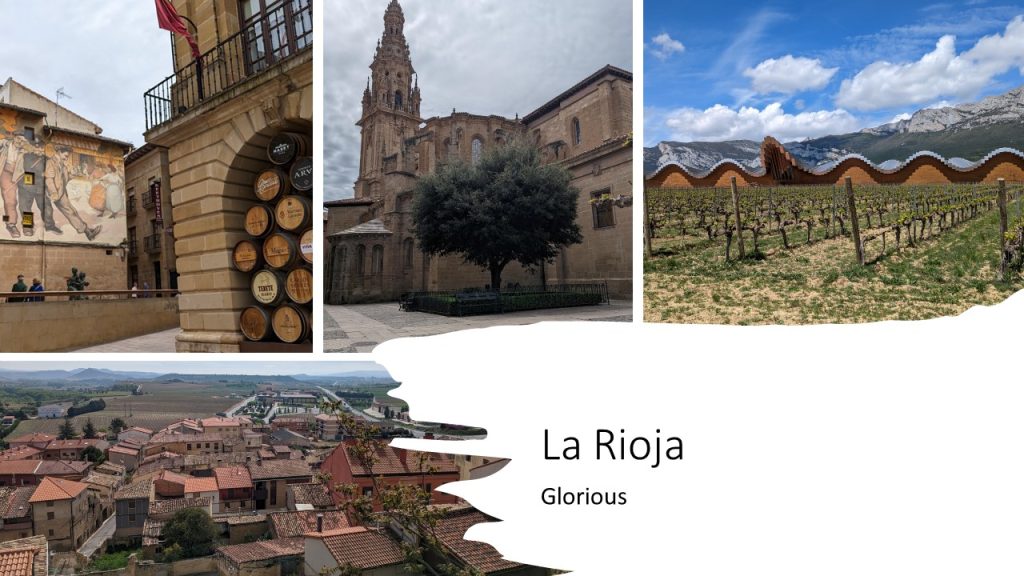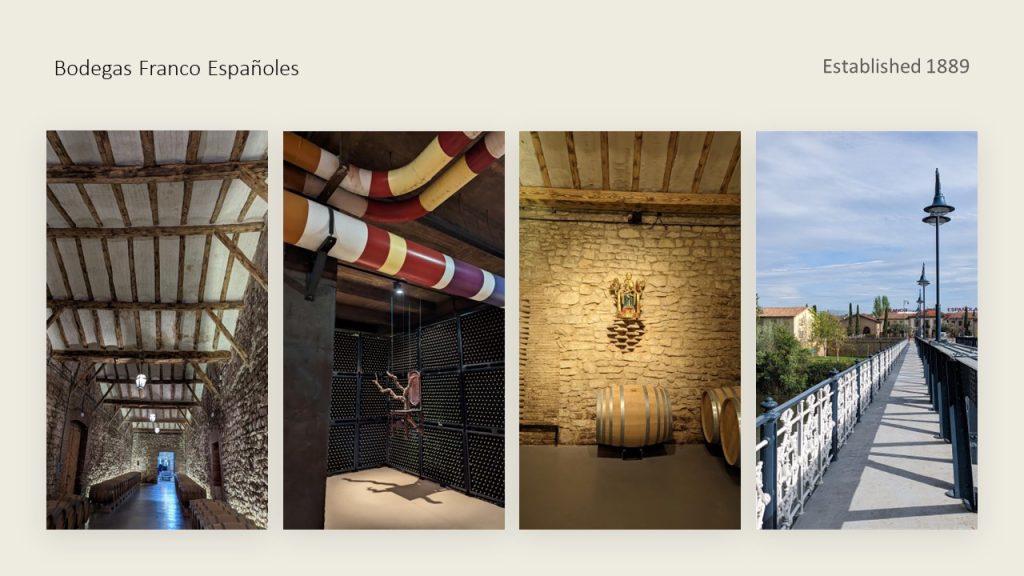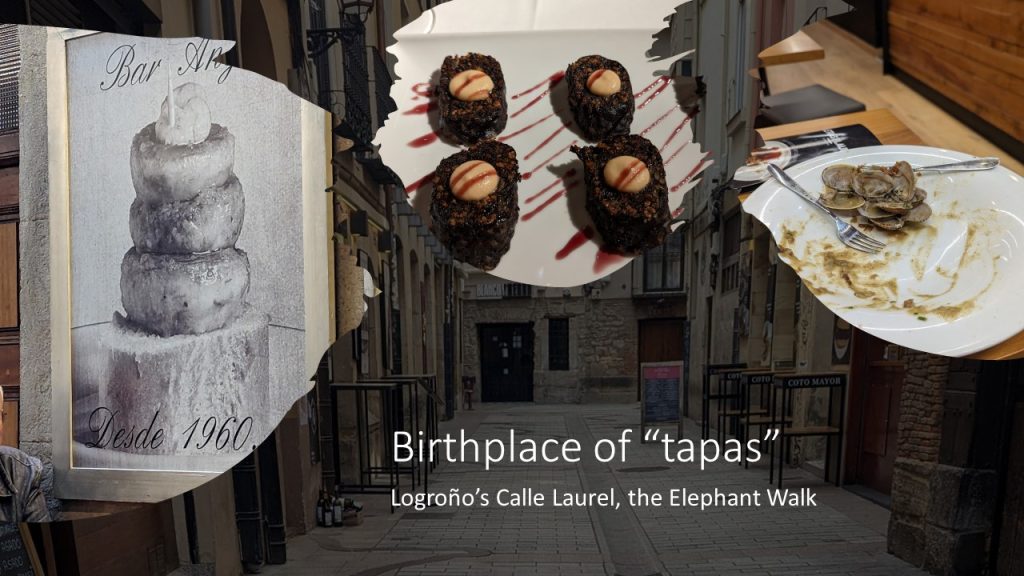
I have just returned from La Rioja in Spain. It seemed appropriate, as we neared the Coronation of King Charles III, to visit the region and the winery where wines for other Regal events were created.
Staying in a Parador, a national chain of hotels in renovated monasteries, opposite a cathedral with a live cockerel in the tower, making sure we woke at dawn, we absorbed the tranquil atmosphere before heading into the countryside, past rows of vines, along valleys and up hills, with fields of potatoes, brilliant yellow rape seed, wheat, asparugus stretching for miles. Stunning.
We drove through village and hill top village – and popped in to take in the amazing architecture of the newer winery building: at Ysios and Marques de Riscal.

The Rioja region is know for fabulous red wines, from Rioja “joven” (which literally means “young”), to Gran Reserva, made from the Tempranillo grape, dominant in this region.
Rioja Joven is a fresh and fruity wine, drunk soon after bottling without being aged in oak barrel; ideal for a light lunch in the sun!
Rioja Crianza is a slightly older wine, aged for at least 1 year in oak barrel and then a further year in the bottle. Good with roasted chicken, moussaka, pork tenderloin, meatballs and tapas.
There are rules for wine “classifications”: Rioja Reserva has to be aged 1 year in oak and 2 years in bottle, and can be kept for a few years. Grilled or roasted meat, lamb chops, sausages are all great with Reserva.
Gran Reserva, which is the serious stuff, is only ever produced in exceptional vintages (years/ harvests), has to have been aged for 2 years in oak and 3 years in bottle, and can be kept (“cellared”) up to 30 years. This is the great accompaniment to all barbecued meats. There are few vegetarians in Rioja !
The lesser known wines of the Rioja region are the whites – and they are fabulous.
“Rioja Blanco” is, as the name suggests, made entirely with white grapes. The main grape is “Viura” or Macabeo. These light, crisp and fresh, citrussy wines are deliciously dry and perfect with fish and shellfish, and the regional specialities such salted almonds and the local white asparagus. We were totally converted to white rioja after this trip – in fact we mostly drank this at lunch and supper!
Staying in Logroño, the capital city of the region, in a deligthful apartment overlooking the square with a majestic cathedral, we walked all around the back streets and in and out of squares with buildings built in the local warm sandy coloured stone.
We visted Bodegas Franco Espanoles, the winery that produced wines that graced the tables of Kings and Queens (at Juan Carlos’ coronation and the Queen of Belgium’s wedding!) and one of the oldest wineries in Rioja, with deep caves alongside the River Ebro. Our friendly host, Yolanda, took us all around, into the vast room where the grapes were deposited into huge tubs after being brought from the vineyards by horse and cart. The barrel rooms stretch for miles – 14,000 of them, all filled with ageing wine, watched over by the Virgin in a Tree (an interesting story). The walls in these cellars are lined with crazy artwork created by a recently retired winemaker in his spare time! Also on display are artifacts from the archives of this winery, established in 1889. Fascinating.

Logroño is the birthplace of “tapas” and these gastronomic delights were in abundance along the Calle Laurel, affectionately known as the Elephant’s Walk, where you can visit over 150 tapas bars for a true authentic taste of Spain. We managed quite a few!

This has really whetted our appetite for the customer trip we are planning later this year to this magnificent region – come and join us.
Penny, April 2023